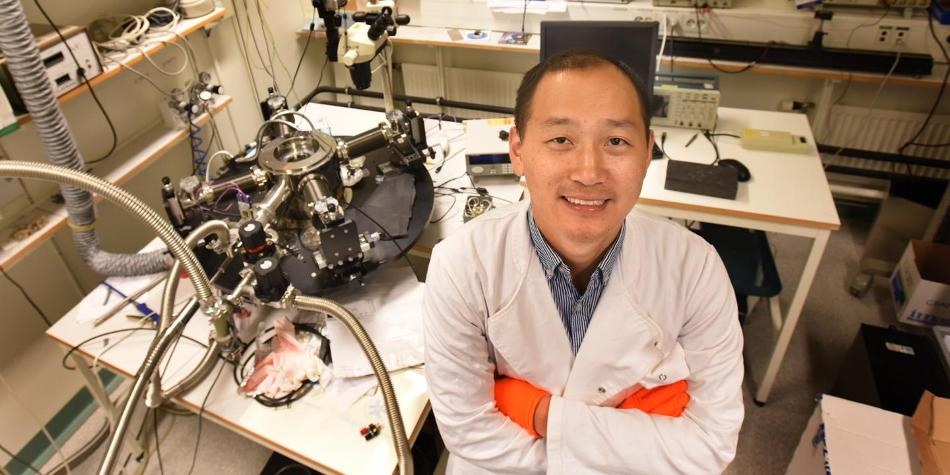Oct 7 2016
 This image shows research fellow Feng Gao, Linköping University. (CREDIT: Photo Göran Billeson)
This image shows research fellow Feng Gao, Linköping University. (CREDIT: Photo Göran Billeson)
In the past it was assumed that for efficient functioning of organic solar cells, a large driving force was required, but that hinders the efficiency of organic solar cells.
Recently, a collaborative team of researchers led by Feng Gao, lecturer at IFM at LiU, He Yan at the Hong Kong University of Science and Technology, and Kenan Gundogdu at the North Carolina State University have created efficient organic solar cells possessing very low driving force.
This means that the fundamental restrictions of organic solar cells are at the same level as those faced by other photovoltaic technologies, moving them one step closer to commercialization.
When photons released by the sun are absorbed by organic semiconductors, strongly bound excitons are produced. The driving force is a measure of the energy that is consumed to divide the excitons into free carriers.
The driving force causes the loss of the photovoltage, a major parameter for the solar cell. The photovoltage is higher when the driving force is lower.
Conventionally, efficient organic solar cells are mostly made up of carbon balls known as 'fullerene' and semiconducting polymers. In this case, a large driving force of more than 0.3 eV is required for efficient charge production. In the current research, the team has substituted fullerene with a semiconducting small molecule, and discovered that a low driving force is required for efficient functioning of the devices.
Organic solar cells based on polymer: small molecule combinations are identified to be more stable, as revealed in another research also headed by Feng Gao and his partners in Beijing, which was published in Advanced Materials.
We have developed a system with a huge potential to increase the power conversion efficiency in organic solar cells.
Feng Gao, Lecturer, LiU
Feng Gao, along with his LiU colleagues, including Professor Olle Inganäs, Professor Fengling Zhang, postdoc Jonas Bergqvist and PhD student Deping Qian, explains in the article that solar cells possessing an energy efficiency of 9.5%, means that 9.5% of the energy in the sunlight is turned into electricity.
The details of the research have been published in Nature Energy.